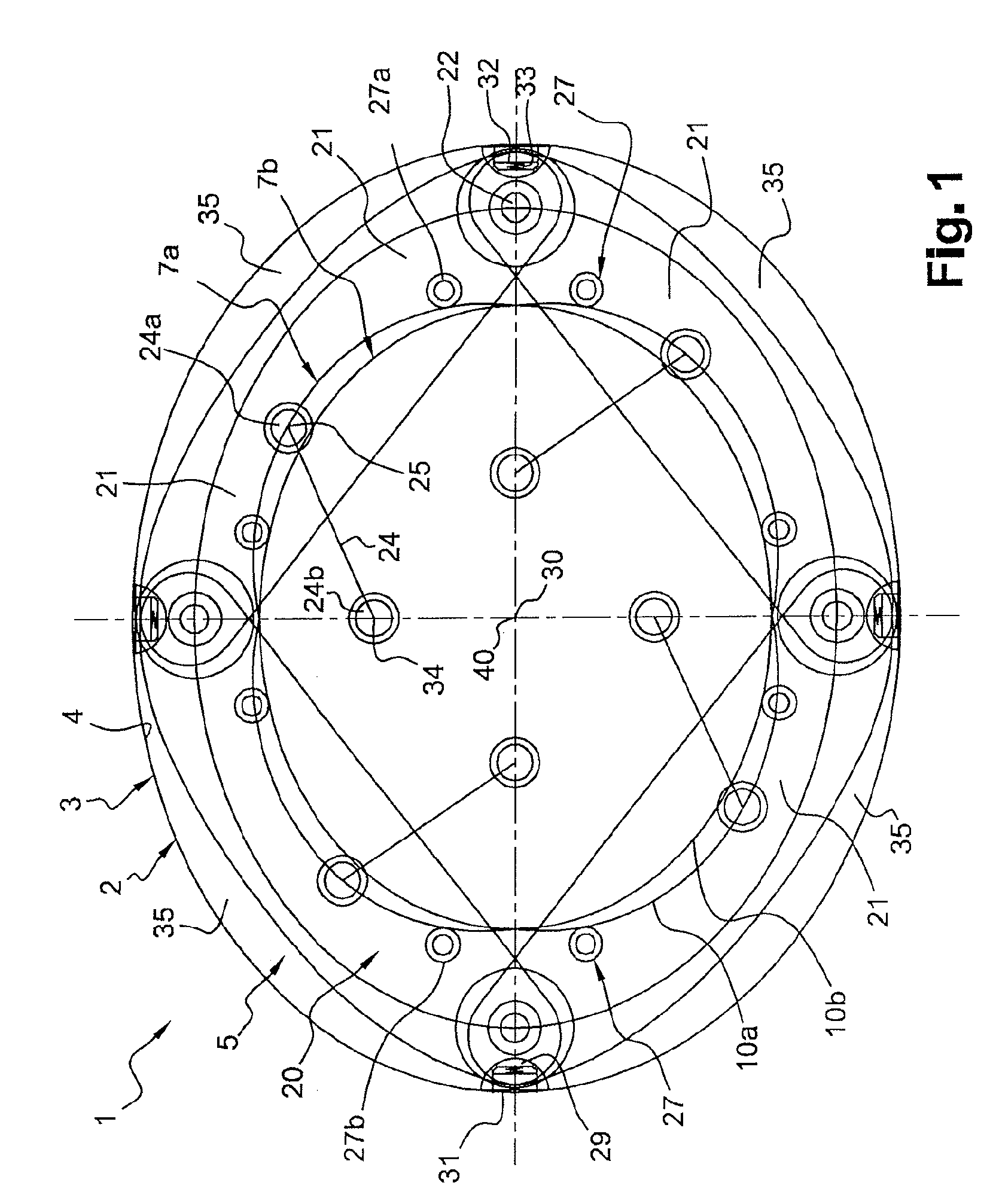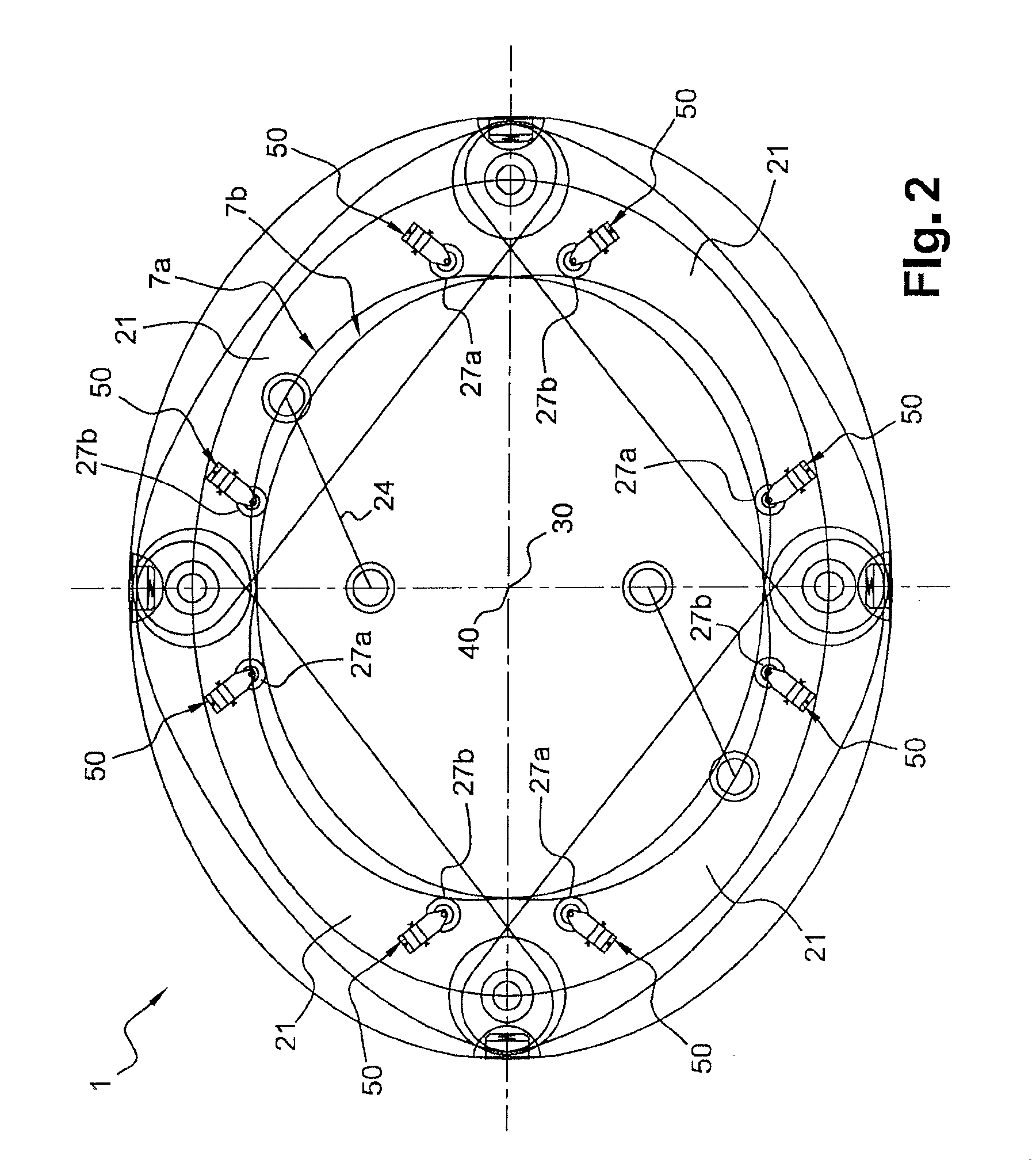Engine having rotary pistons
a technology of rotary pistons and pistons, which is applied in the direction of rotary piston engines, rotary or oscillating piston engines, and engines of arcuate-engagement types, etc. it can solve the problems of limiting the lifetime of the pieces thus embrittled, tightening problems, and no technical solution has been proposed. , to achieve the effect of limiting the friction on the guide surface and small bulk
- Summary
- Abstract
- Description
- Claims
- Application Information
AI Technical Summary
Benefits of technology
Problems solved by technology
Method used
Image
Examples
Embodiment Construction
[0068]As illustrated in FIGS. 1, 2, 3 and 8, a rotary piston 21 mechanism 1 includes an outer enclosure 2 forming a stator inside which a rotary assembly 20 forming a rotor moves.
[0069]All of the reasoning described hereafter is valid for a polygon with n apices. The following reasoning is based on an embodiment with a polygon having four apices, or with four pistons forming an articulated deformable diamond, this example not being limiting.
[0070]The outer enclosure 2 in the embodiment illustrated in FIGS. 1, 2, 3 and 8 includes a single-piece body 3 generally made from steel, forming a volume with two identical ellipsoidal bases, in which an ellipsoid-shaped through cavity 5 is bored. The inner surface 4 of said cavity 5 is advantageously glazed so as to give it a surface state satisfactory for the applications of the mechanism 1.
[0071]The outer enclosure 2 also includes two lateral ellipsoid-shaped flanges 6a, 6b, shown in FIGS. 6 and 7, closing the through cavity 5 at each of the...
PUM
 Login to View More
Login to View More Abstract
Description
Claims
Application Information
 Login to View More
Login to View More - R&D
- Intellectual Property
- Life Sciences
- Materials
- Tech Scout
- Unparalleled Data Quality
- Higher Quality Content
- 60% Fewer Hallucinations
Browse by: Latest US Patents, China's latest patents, Technical Efficacy Thesaurus, Application Domain, Technology Topic, Popular Technical Reports.
© 2025 PatSnap. All rights reserved.Legal|Privacy policy|Modern Slavery Act Transparency Statement|Sitemap|About US| Contact US: help@patsnap.com



